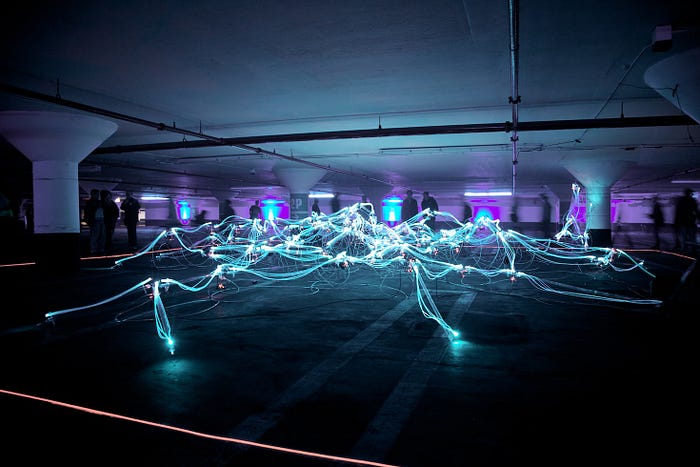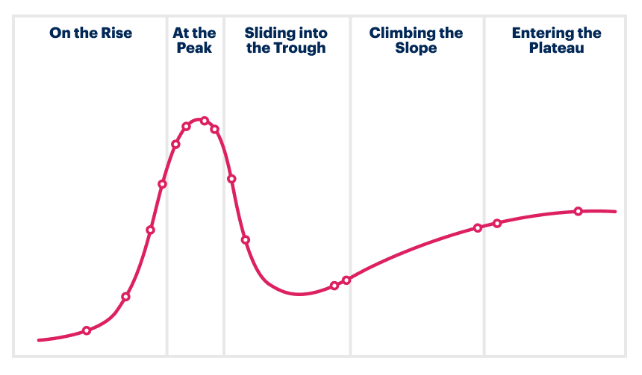NFTs are dead. Long live NFT Utility!
Access Credits
8 min readHow a second generation of NFTs can be used to provide ownership and bring interactivity and NFT utility to digital assets

What’s an NFT and why have they “failed” so far?
NFTs represent ownership of digital assets in a decentralized manner. They allow you to control assets in a digital environment that traditionally have belonged and been controlled by a third-party.
In traditional, Web2 digital environments, the ownership of digital assets by their users is more faith than reality. Faith in the infrastructure where these assets live and faith in the owners of that infrastructure.
It’s quite common to think that you own that character you purchased to play a video game, or that subscription to a streaming service, etc. But, in reality, these are just entries in a company database. These assets you “own” and paid for, could be updated or deleted (accidentally or not) tomorrow by the entity running the infrastructure where these digital assets exist. Additionally, your account can be “banned”, etc. In any of these situations all your digital assets just evaporate. And good luck claiming them back…
NFTs help resolve this. However, what’s been delivered to date has, in retrospect, largely failed. NFTs still have the potential to enable your independence from any third-party. But most of what we’ve seen so far is speculation on top of static images, wrapped around impossible Terms and Conditions.
If this is the Web3 “revolution”, then Houston, we have a problem.
A new generation of NFT Utility is coming
As with any new technology, the short history of NFTs has seen it follow the typical journey hype cycle for emerging technology.

During 2021 and 2022, we lived in the infancy of the NFTs technology and reached the peak of the hype cycle. Many digital assets were put online and traded. With a main focus being the speculative factor of the new “thing”, the first age of NFTs had some characteristics:
- The concept of ownership was not enforced, the NFT content creator didn’t “own” the asset…the platform minting it did.
- A digital asset is made up of a bunch of different stuff: a Smart Contract, Metadata and potentially files attached to it. If all of this is not immutable it can disappear at any moment.
- From a user’s point of view, most of the NFTs didn’t bring any real utility or benefit vs. traditional assets. Terms and conditions made that very clear.
- The digital assets had no attribution, no provenance, and no utility beyond liquidity (i.e. money traded). These NFTs were basically just static pictures.
Beyond the fun of playing with a new technology, the first age of NFTs didn’t provide any real value to content creators or final users, other than the pure speculative aspect. There is an obvious disenchantment because they didn’t provide any real improvement to existing digital assets.
But with the lower hype came also more clarity and thinking on the benefits NFTs technology can bring to a digital world and their users. A second age of NFTs is coming with a different direction:
- Enforcement of ownership and content attribution to creators and users.
- Activation of digital assets utility, like the ability to merge, combine and remix assets (video game armor anyone?).
- High Availability of all the content associated with the digital asset…these assets won’t disappear, ever.
- Interaction of NFTs, where collaborators can work together to create net new things.
- Attribution to content creators via provenance and royalties for secondary market sales.
You can read more about it in this post we wrote last fall: Facilitating asset tokenization with NFTs.
Ownership for content creators and their users
It’s commonly known that Web2 facilitated the interaction of users around the content they created and uploaded to big social platforms. All this content created was by them, but is actually owned by these platforms, which is then reused and monetized again and again in multiple ways by the platform. The content creators see little to no value extraction. One of the intentions of Web3 is to fix this, by bringing the ownership of content to the original creators of them.
NFTs as a digital representation of a piece of content owned by a creator are a perfect solution to maintain the ownership of the content. This digital content can be created, registered on-chain, wrapped in a NFT and tracked back later to the original creator. Numerous advantages emerge from this pattern because the asset is always linked to its original creator, the one who originally says how the asset can be used (I recommend looking at the lawsuit presented against OpenAI and co. and this article about how NFTs and blockchain can help to fix that).
Activating the utility of digital assets
In a digital world, assets need to be represented somehow. We spoke about the ownership of them. But NFTs are also useful in describing the digital asset, what its properties are and how that asset can be used. This is important, because on top of the “ownership” concept we can build the “utility” concept. That means how the asset can be used and under what conditions.
The utility allows that asset owners can define things like:
- A piece of the asset that can be traded or sold.
- Ownership from a third-party of a piece of an asset can give access to something exclusive.
- The asset can be rented for temporary use.
- The asset can be lent for a period of time.
- The asset can be analyzed by a particular algorithm or AI.
- The asset can be morphed with something else by an algorithm to create something wholly new.
- etc, etc.
There is big territory to explore where content owners and developers can design and activate different kinds of utilities on this new kind of digital assets.

What extra value does Nevermined bring?
In Nevermined, we went beyond the basics and we built some additional features that can be used to deliver more powerful use cases. Some of these extra features are the following:
Decentralized Access Control
Nevermined includes an access control mechanism that allows content creators to provide special access to certain assets or services under some circumstances. This enables powerful use cases like exclusive access, enabling the users holding some NFTs to get access to something exclusive and unique.
Assets Trading
With Nevermined smart contracts, any asset registered into the platform can be sold, lent or be used as part of a secondary market where original content creators can get royalties.
Search and Discovery
To facilitate the [discovery of digital assets](../tutorials/searching-information.md) and the NFTs attached to them, when assets are registered into Nevermined the creator can define specific metadata that describes what the asset is, how it can be used, and who can use it. This metadata can be stored in an immutable manner too on IPFS or Filecoin.
Provenance
Nevermined Smart Contracts provide a provenance track record that register all the interactions around digital assets. More information in this Provenance blog post.
Subscriptions
Building off of Nevermined’s Decentralized Access, Nevermined now allows content creators to control the access to exclusive perks under certain conditions, like a period of time or for a certain number of accesses, to those who hold the token. These subscriptions can be defined in a flexible manner and specify numerous subscription-style mechanisms.
Using NFTs to register these subscriptions allow subscribers to re-sell them in a secondary market and to publishers capture royalties because of that.
More information in this post about Bringing online subscriptions into Web3 with NFTs.
Soul Bound or Non-Transferable NFTs
As stands in the name, Non-Transferable Tokens (NTT) are a special kind of NFTs that can be transferred. Once they are minted and are owned by a user they can not be sent to anyone else. This is useful for use cases that want to represent personal achievements or similar characteristics that are directly tied to the identity of the owner of that NFT. These traits, combined with the Nevermined Smart Subscription, help move the community in the direction of informed consent…bye bye traditional Terms and Conditions!
Data In-Situ Computation (DISC)
Nevermined brings compute to the Web3 game. We are the pioneer in this space that now sees more participation from the likes of Filecoin (COD), and others. By facilitating the set up and orchestration of different types of computation, Nevermined enables NFT interactivity. This capability lets owners combine their assets to make new derivatives, like merging images into video (check out Nevermined Arcadia), or to collaborate with others to create entirely new NFTs. This same capability also enables the orchestration of AI, delivered with all the bells and whistles included with NFTs, like fine-grained provenance and proper attribution. Stick around to see what we’re launching in this space in the next month or two… 😉
Putting the Tech to Work
We recently collaborated with HairDAO, a DeSci DAO focused on ending hair loss for all. To test Nevermined’s cabilities, we tokenized Person Health Information test data and then rewarded the DAO collaborators in native tokens $HAIR based on the data’s relevance. The process involved minting a NFT for each collaborator’s data asset, then processing the asset with an algorithm to determine the data quality against a use case. The more relevant the data, the higher the reward.
The next step for Nevermined is to enable Federated Learning across the available assets so that scientists can begin testing different drug combinations models. This is but a short glimpse into what the Nevermined technology can enable for the good of all.
How to build your own applications using Nevermined NFTs?
You can find some more technical information and examples in the Nevermined docs website. Can be specially interesting this tutorial page about to use the Nevermined SDK to activate all this functionality
Want to know more?
If you want to know more about Nevermined, go to our website or explore our Documentation.
And we’d love to hear from you. Got any questions, suggestions or want to chat about your project? Contact us via the website or join our Discord.